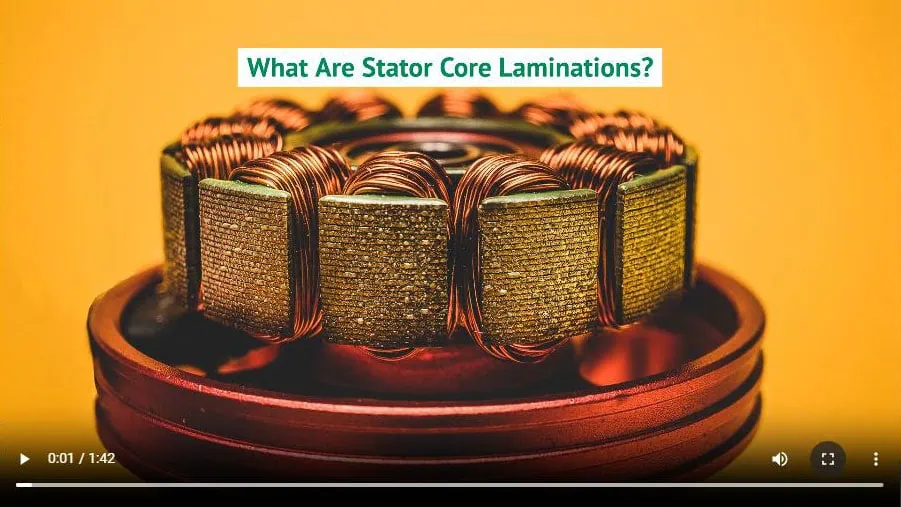In electric motors, the cores of rotors and stators consist of motor laminations. A motor lamination is a thin sheet of metal usually bonded, welded, or stacked together to form several durable layers. They reduce eddy current losses because they use multiple individual metal pieces instead of one solid metal piece.
Here you’ll learn more about stator cores and why laminations are important.
What Is the Primary Function of a Stator Core?
Stator cores typically comprise as many as thousands to hundreds of thousands of steel laminations. Fabricators produce these precise laminations using computer-controlled laser cutting machinery or punching and stamping dies.
The process of manufacturing a stator core involves continuously placing laminations side-by-side. The goal is to form a complete circular or ringed layer with the laminations. The process involves laying out each layer until the required length or number of layers is achieved. In most cases, each layer in a stator core will have a thickness of around 0.004” to 0.025”, with a length of 1” to 10”.
Production completes with the aligning and fastening of all segments or layers. Fastening involves the use of finger plates, key bars, compression rings, building bolts, and other equipment to apply compressive loads.
Why Is it Important to Build Your Rotor and Stator Cores out of Laminations?
Stator laminations offer significant benefits to help optimize engine performance. Specific advantages include:
- Minimizing Eddy Currents — In an electromagnetic field, stator cores produce voltage called an eddy or circulating current, which can cause power loss and performance inefficiency. Stator laminations cushion the core and subsequently reduce eddy currents. As a result, the core maintains consistent efficiency and power.
- Reducing Hysteresis Loss — The stator core’s electromagnetic field also causes a degree of magnetization known as hysteresis. The process of magnetization and demagnetization creates a loop. As the core generates heat, hysteresis loss occurs, costing large amounts of power and energy loss. Laminations minimize hysteresis loss to increase efficiency.
- Cooling the Stator Core — Solid metal pieces in stator cores may cause the stator core to overheat, increasing the risk of melting. Laminations reduce the amount of heat the core produces, keeping it cool enough to avoid melting.
Stator Core Laminations From Thomson Lamination
If you require reliable stator core laminations for electric motors, Thomson Lamination Company (TLC) offers some of the best solutions available. We are a leading manufacturer of stamped lamination products that meet tight tolerances and use top-quality metal materials. Depending on what you require for your application, we can manufacture laminations from silicon steel, cobalt, nickel, or thin-gauge electrical steel.
To give our customers the best results, we provide services in a 76,000-square-foot facility fitted with all necessary equipment. This facility contains a selection of high-speed presses up to 250 tons, with the ability to run dies up to 36” by 72”. Additionally, we have a catalog of more than 1,500 dies. Using this equipment, we stamp motor laminations ranging from 0.5” OD to 14” OD, producing durable products for use in core assemblies. Depending on your unique specifications, we can design a custom solution. We also offer a host of capabilities, including stamping, annealing, assembly, grinding, toolroom, and die services.
At TLC, we provide our customers with the ideal solutions for their applications. We’ll work with you to understand your specific needs and develop the best laminations for the application. To learn more about our products or capabilities, contact us today.. To get started on your custom lamination project, request a quote for our services.
Posted in Uncategorized
